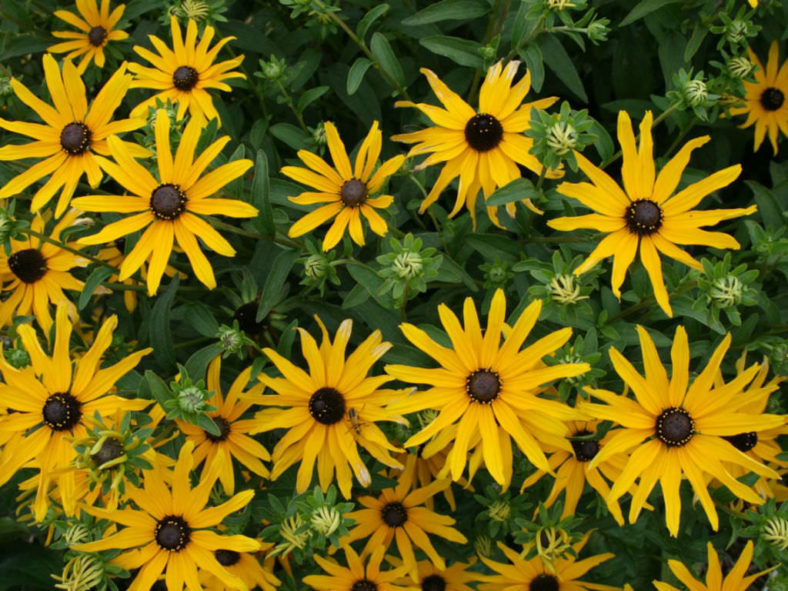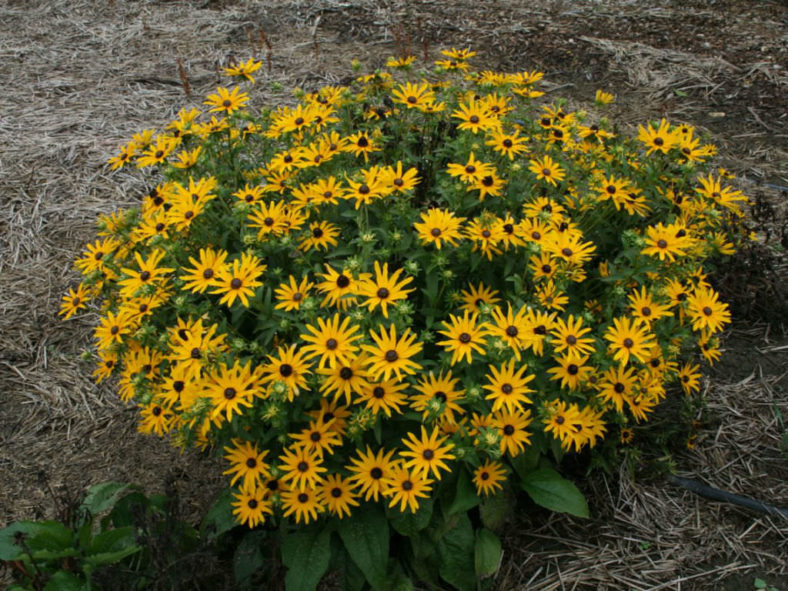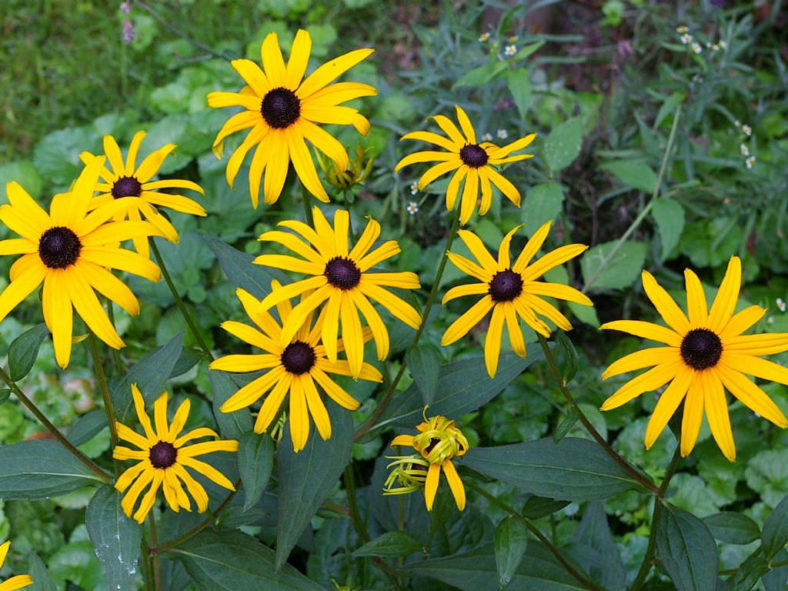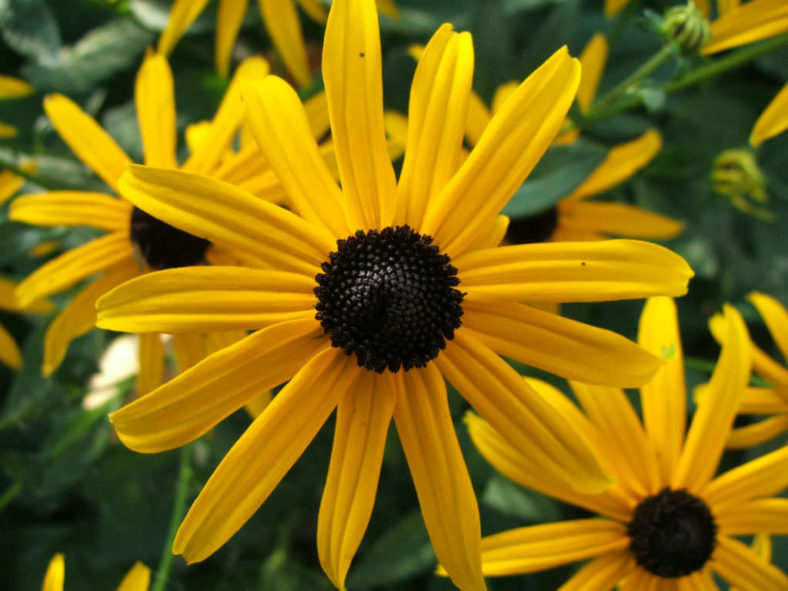Scientific Name
Rudbeckia fulgida Aiton
Common Name(s)
Orange Coneflower, Black-eyed Susan, Perennial Coneflower
Synonym(s)
Centrocarpha fulgida, Helianthus fulgidus, Rudbeckia speciosa
Scientific Classification
Family: Asteraceae
Genus: Rudbeckia
Flower
Color: Yellow
Bloom Time: Summer
Origin
Rudbeckia fulgida is native to eastern North America.
Description
Rudbeckia fulgida is a clump-forming perennial that grows up to 4 feet (1.2 m) tall, often forming colonies in the wild. Flowers are daisy-like, with golden yellow rays surrounding a brownish-purple center disk. The plant blooms profusely, generally from mid-summer to early fall.

Hardiness
USDA hardiness zone 4a to 9b: from −30 °F (−34.4 °C) to 30 °F (−1.1 °C).
How to Grow and Care
Black Eyed Susan plants are drought resistant, self-seeding, and grow in various soils. Growing Black Eyed Susans prefer a neutral soil pH and a full sun to light shade location.
Black Eyed Susan care will often include deadheading the spent blooms of the flower. Deadheading encourages more blooms and a sturdier, more compact plant. It also can stop or slow the spread of the Black Eyed Susan flower, as seeds are contained in the blooms. Seeds may be allowed to dry on the stem for reseeding or collected and dried in other ways for replanting in other areas. Seeds do not necessarily grow to the same height as the parent from which they were collected.
The Black Eyed Susan flower attracts butterflies, bees, and other pollinators to the garden. Deer, rabbits, and other wildlife may be drawn to Black Eyed Susans, which they consume or use for shelter. When planted in the garden, plant the Black Eyed Susan flower near Lavender, Rosemary, or other repellent plants to keep wildlife at bay.
See more at How to Grow and Care for Black Eyed Susan.
Varieties and Cultivars
- Rudbeckia fulgida var. deamii
- Rudbeckia fulgida var. sullivantii
- Rudbeckia fulgida var. sullivantii 'Goldsturm'
- Rudbeckia fulgida 'Early Bird Gold'
Links
- Back to genus Rudbeckia
- Plantpedia: Browse flowering plants by Scientific Name, Common Name, Genus, Family, USDA Hardiness Zone, or Origin
Photo Gallery
Click on a photo to see a larger version.




